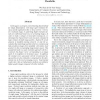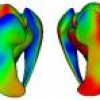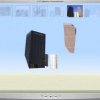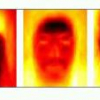CVPR
2007
IEEE
16 years 3 months ago
2007
IEEE
In this paper, we propose a novel learning-based method for image hallucination, with image super-resolution being a specific application that we focus on here. Given a low-resolu...
102
click to vote
CVPR
2007
IEEE
16 years 3 months ago
2007
IEEE
Tracking over a long period of time is challenging as the appearance, shape and scale of the object in question may vary. We propose a paradigm of tracking by repeatedly segmentin...
CVPR
2007
IEEE
16 years 3 months ago
2007
IEEE
One problem with the adaptive tracking is that the data that are used to train the new target model often contain errors and these errors will affect the quality of the new target...
129
click to vote
CVPR
2007
IEEE
16 years 3 months ago
2007
IEEE
The paper presents a fusion-tracker and pedestrian classifier for color and thermal cameras. The tracker builds a background model as a multi-modal distribution of colors and temp...
117
click to vote
CVPR
2007
IEEE
16 years 3 months ago
2007
IEEE
An important goal of statistical shape analysis is the discrimination between populations of objects, exploring group differences in morphology not explained by standard volumetri...
122
Voted
CVPR
2007
IEEE
16 years 3 months ago
2007
IEEE
The existing methods for offline training of cascade classifiers take a greedy search to optimize individual classifiers in the cascade, leading inefficient overall performance. W...
CVPR
2007
IEEE
16 years 3 months ago
2007
IEEE
In this paper, we describe a technique to temporally sort a collection of photos that span many years. By reasoning about persistence of visible structures, we show how this sorti...
CVPR
2007
IEEE
16 years 3 months ago
2007
IEEE
135
Voted
CVPR
2007
IEEE
16 years 3 months ago
2007
IEEE
Detecting and segmenting moving objects in dynamic scenes is a hard but essential task in a number of applications such as surveillance. Most existing methods only give good resul...
127
click to vote
CVPR
2007
IEEE
16 years 3 months ago
2007
IEEE
This paper presents a new incremental learning solution for Linear Discriminant Analysis (LDA). We apply the concept of the sufficient spanning set approximation in each update st...




